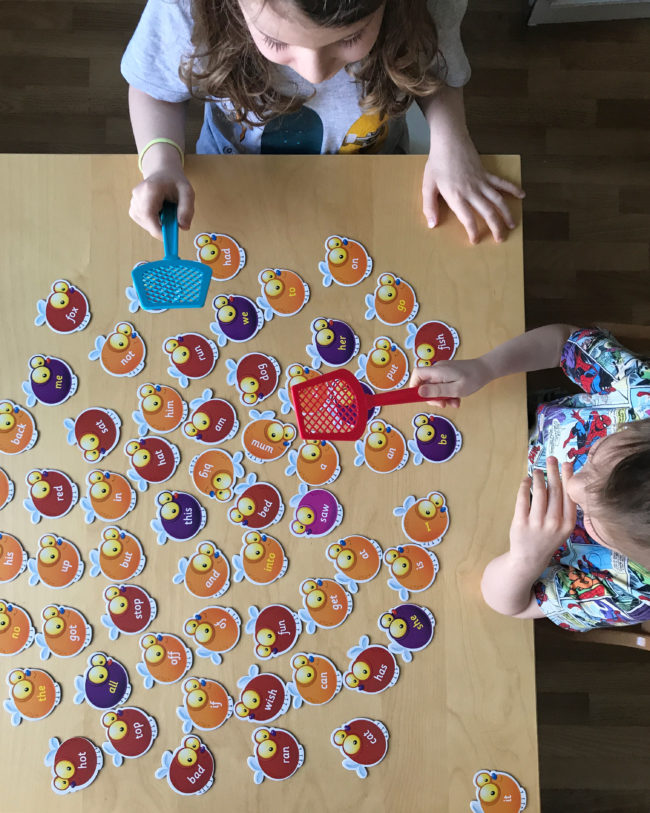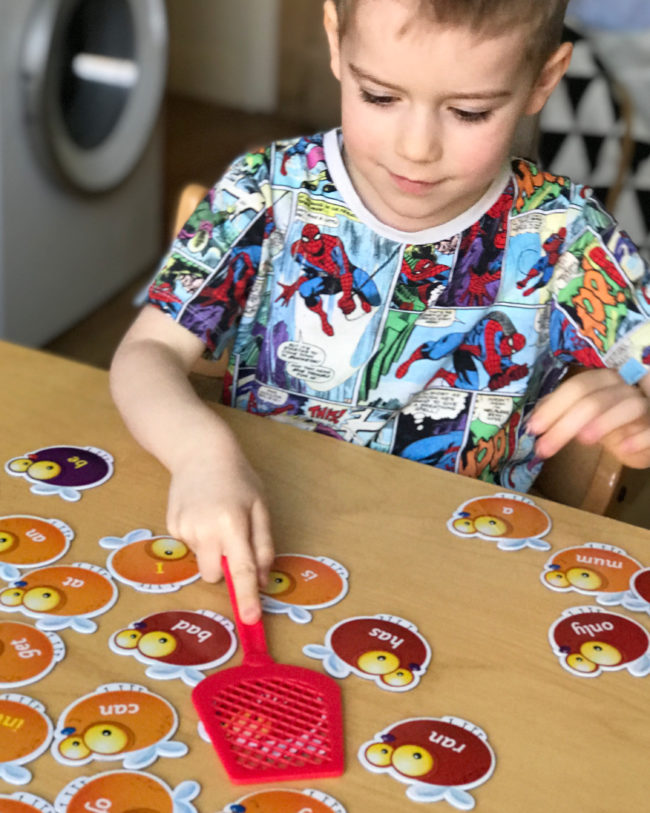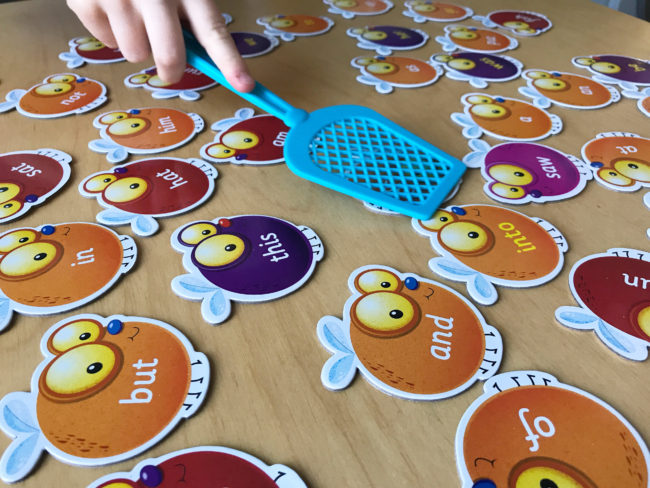
Review: Sight Word Swat! Game [AD]
A couple days ago I shared some of our favourite home learning resources, and today I wanted to share a game with you that we have been sent for review, which has been helping us a lot with literacy learning for our P1. Sight Word Swat! is a high frequency words game from Learning Resources, who produce a fantastic range of games to help with literacy, maths, science and more.

I have to admit, I didn’t know what ‘Sight Words’ were before my kids started school. They are a selection of core words that readers should be able to recognise instantly and effortlessly, i.e. on sight. Some of these words can be sounded out phonetically, others need to be learned off by heart as they sound different than they look. The game – and our school – refers to these as ‘tricky words’. We didn’t want our kids to have the negative connotation of ‘tricky’ meaning ‘difficult’, so we have always said they are tricky words because they try to trick you! The boys think it’s funny, and they think of the tricky words as cheeky rascals who try to catch you out.

Anyway, Sight Word Swat! aims to train children’s word recognition, which in turn helps them to become faster, more fluent and more confident readers. In the box, you will find 150 double-sided cards in the shape of flies featuring 300 different sight words. These are colour coded for five different phases, each with increasing difficult, and in addition all the ‘tricky’ words have been highlighted in bold and yellow.

To set up the game, either choose one of the colour coded phases or a mix of colours from different phases, depending on what level your child is at and what words they have been learning at school. Since our youngest is only in P1, we chose the easiest phase (orange) but I added in a few other coloured flies with words that I know he can read. Lay the flies out in the middle of the table to all children can see. Since he was playing against his brother who is in P5, I laid out the words so that they were all the right way up for my P1 and my P5 had read them sideways, giving him a bit of a handicap.

To play the game, an adult (i.e. me in this case) calls out a sight word and the first player to find it swats that fly with their fly swat. Very simple really. The object of the game is to be the player to collect the most flies. You an decide for yourselves for how long you want to play or how many words you want to call out. At the end of the game, players have to read out all the words they have won, to reinforce the sight words. I have to admit, I was a bit worried that my P1 would totally be thrashed by his big brother, who is a very confident reader, but the little one was surprisingly fast at spotting the words he knew so they were fairly evenly matched when it came down to speed.

There are also some suggested variations, such as calling out more than one word at a time, players calling our words for each other, or separating out tricky words to play them separately. You van also play with a reduced number of flies for early readers, so that they don’t feel overwhelmed.

For a one player variation, you can set a time to see how many words your child can find in 10, 20 or 30 seconds. Or vice versa, how long it takes them to find a certain number of words. We have been sent home a list of words for the P1s to work on, so I went through all the flies and picked out the ones that matched the word list from school – this reduced number of flies is what we have been using for our one player variation. There are nine ‘tricky’ words that he hasn’t quite mastered yet from his school list, so we have been keeping those nine flies out of the box as our ‘words of the week’ to revise whenever we have a few moments to spare.

You could argue that Sight Word Swat! is little more than fly shaped flash cards, but for young children presentation makes all the difference. Our P1’s motivation has really been flagging, ever since the initial novelty of home learning wore off, and we’ve been struggling to get him to interested in his spelling and reading sent from school. We’ve tried flashcards before – just by cutting up the word sheets the school had sent – to no success. But presenting those words as cute little flies, and giving him a swat to bash them with, and suddenly he’s all up for it. The colour coding and highlighting of different levels and tricky words helps me to find what we need quickly, and within a couple of days he has mastered three of those nine tricky words already that he had been stuck on for weeks. The cards are nice and sturdy too.

Overall, this has been yet another winner for us from Learning Resources and definitely one we would recommend for home learning literacy work.It is available to buy from Amazon.
As parents and children spend more time at home, Learning Resources have also put together free resources for home learning to support families with children aged 2-11. Designed to keep children engaged, the activities will help turn time spent at home into a more fun learning experience. As I mentioned in my previous post, we have been using some of these resources in our home learning already and give them a thumbs up!
[line]
Disclosure: We were sent a free copy of this game in return for an honest review. All views and opinions are our own. Please note that the product links in this post are Amazon affiliate links. That means if you buy anything via these links, I receive a small percentage of the sale – at no extra cost to you – which helps to keep this blog running. Thank you.







Pingback: Easter Egg Hunt with Learning Resources [AD] – The Bear & The Fox